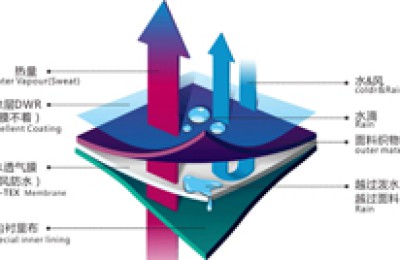Recently, the editor asked many textile bosses the same question: What fabrics are selling best these days? The answer is surprisingly unanimous: almost none! (No suspense!)
In June, the traditional off-season has arrived early, and the overall market transactions have become duller. The chemical fiber protective clothing fabrics that can still be shipped from time to time in the early stage have also begun to fade. Faced with rising inventory, textile bosses really panicked!
A fabric supplier who is a brand customer said: “Currently, there are 5 or 6 million meters of orders piled up in the factory, and I no longer dare to produce! Our products have high cost and good quality. If we want to follow the market Due to the competition among goods, the price has no advantage at all, and the current market situation is not in sight. I am considering starting a holiday at the end of June!”
In fact, this kind of situation is not uncommon in the market.
According to the sample companies monitored by China Silk Capital Network, it has become the norm for finished product inventories to last for more than one and a half months, and most weaving manufacturers have millions of meters of goods on hand. Gray cloth, and the larger the scale, the greater the inventory.
In addition, according to the latest report of the International Textile Manufacturers Federation (ITMF), from the beginning of the pandemic on March 1, 2020 to June 8, 2020, the world Textile orders from various places have plummeted by more than 40%. Among them, orders from fiber manufacturers fell by 42%, orders from yarn mills fell by 44%, orders from weaving mills fell by 46%, and orders from clothing manufacturers fell by 37%.
It can be seen that orders in all links of the entire industry chain are shrinking, and the orders of weaving manufacturers, as the intermediate link, have dropped most significantly. This has also directly led to market supply exceeding demand and weak bargaining power. , it is even more difficult for companies to make profits!
Bearing the risk of “spending one’s family” Worker!
I once heard a story: In capitalist countries, there is a theory of “pouring out milk”, which means that even if you would rather pour out the milk , nor distribute it to the poor. This scene first appeared in the economic crisis of 1930. At that time, the economy was in decline and milk could not be sold, but the American Golden E Dairy industry dumped 25,000 gallons of fresh milk every day instead of directly distributing it to the poor who were in more need.
The reason for this is to create a scarcity of milk and then sell it at a higher price, thereby obtaining higher profits. Therefore, in order to solve the inventory crisis that broke out in 2013, H&M, the global fast fashion giant, will burn through 12 tons of inventory a year without discounts or price cuts.
But this road will not work this year, especially when “there is not enough to eat” weaving market.
In the past, the gross profit of weaving manufacturers was about 10%, but now the profit is basically about 5%, and some are even slightly losing or flat, coupled with a lot of pressure on payment, This makes this year’s weaving boss even more difficult.
From the perspective of various cost expenditures, labor, water, electricity and rent costs have not decreased compared with previous years. Some scarce types of work have increased prices at the beginning of the year. Raw materials have been rising slowly in May. , and the market competition is fierce, most cloth bosses still have not raised prices, fearing that the few orders will be increased in price.
Take the most conventional polyester taffeta on the market as an example. The current market price is less than 1 yuan/meter, but Recently, the price increase of raw materials has exceeded 1,000 yuan/ton. Due to the large production capacity and low threshold, the output of polyester taffeta is also amazing, and the social inventory is also large. This has also led to the weak bargaining power of manufacturers. In the face of today’s market, they are powerless. markup. According to the current raw material prices, 190T polyester taffeta has entered a loss mode.
I have heard in the market that high-end looms are used to make low-end products. It can be seen that manufacturers have gone to any lengths to receive orders. “In the past, my business philosophy was to be a quality customer and not to engage in price wars. But with the market situation this year, we have more and more inventory. I can only let go of my obsession and sell products at low prices.” A pongee fabric manufacturer The person in charge said, “Now I don’t have a big bottom line when accepting orders. As long as I don’t lose money, I will do it.”
It is reported that at present, the domestic and foreign trade markets have not fully recovered. , the market inventory is high and homogenization competition is relatively fierce, so “low price”, “lowest price” and “lower price” appear. Take 320T pongee as an example. The price of the finished product of 320T pongee this year is more than 3 yuan, while last year the price was still the price of gray fabric. With such low-priced fabrics, the textile factory boss is no longer thinking about making money, but how to use the funds. Return to stock and reduce inventory.
“Half of the machines in our factory are currently in operation. We are also urging sales to take orders. As long as we don’t make a loss, we will do it. It is mainly to support the workers and is afraid of the market going up. If there are no workers, it will be even more difficult.” said Mr. Shen, another textile boss.
If it goes up, I will let it go.�!
Textile bosses who have not had enough to eat for three months are even more worried about the future market. In addition, there is a risk of a second outbreak of the domestic epidemic in the near future. , which further aggravates the boss’s “cautious” mentality.
In the second half of the year, the operating rate of looms in Jiangsu and Zhejiang regions also dropped slightly. It is reported that the current operating rate of water-jet looms in Shengze and Changxing has dropped to 60-70%; the operating rate of Haining and Changshu warp knitting markets is 70%; Xiaoshao circular knitting machines are less active in production due to weak orders, at about 30-40% .
Mr. Sun, a trader in the Changxing market who sells brushed fabrics, said: “The orders in the market have become thinner recently. Many friends who run factories have said that they will go back to their hometowns during the holidays and come back when the market gets better.” Holidays and production cuts have become a trend in the recent textile industry. The question that the boss has been thinking about.
“Since June, we have only opened less than half of the machines, which are mainly used to produce pongee and polyester taffeta. At present, our raw materials can be used until the end of the month. If If the price of raw materials is still rising or not falling, then we will consider taking a holiday.” said Mr. Wang, a textile owner with nearly 300 looms. Another company with more than 200 looms, Mr. Qian, has been on vacation for a week. In his words, it saves money to take a vacation than to start the machine.
As the Dragon Boat Festival holiday approaches, domestic trade and foreign trade market orders have not performed well, and new orders in the market have been discontinued. Therefore, more and more textile mills are beginning to consider holiday matters. It can take as little as 3-5 days and as long as 7-10 days.
The epidemic has caused great changes in the products and structure of the textile market this year. Now foreign trade companies are desperately looking for domestic trade markets to expand, and the domestic trade market is stabilizing through prices. Customers, the entire textile enterprise survives in every possible way. Generally speaking, companies are controlling operating costs and looking for a place to settle in the market.
</p






